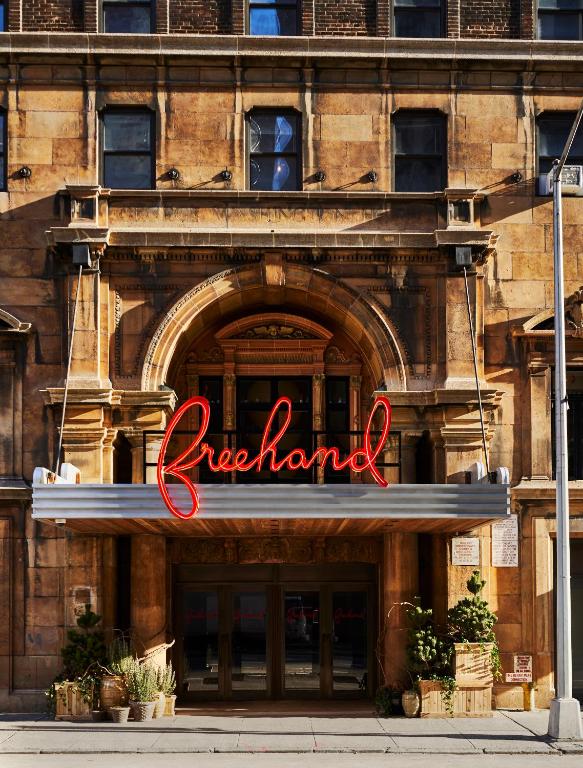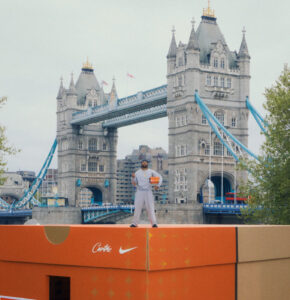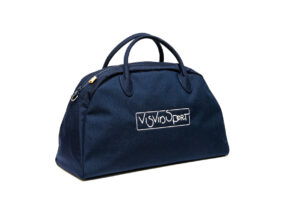Freehand New York, located in the Flatiron District, is part of the Sydell Group’s growing portfolio, which includes well-regarded properties like NoMad, The Line, The Ned, and Saguaro. The Freehand brand, known for its fusion of artistic flair and affordable, communal experiences, has established properties in Miami, Los Angeles, and Chicago, but the New York edition brings its own challenges and quirks, particularly due to local regulations. After a recent stay at the hotel, I walked away with mixed feelings. While the hotel’s design and atmosphere impressed, several key areas left much to be desired, leading to an experience that felt colder than expected.
The Booking Experience
The booking process itself was relatively straightforward. Freehand New York offers a range of room options, catering to a variety of guest needs, from bunk bed rooms designed for friends and colleagues to share, to more traditional private suites. However, New York City laws prohibit the hotel from offering the same shared room accommodations that are available in their other locations, such as Miami or Los Angeles, where single beds in shared bunk rooms can be booked.
First Impressions and Arrival
Upon arrival, the lobby of the Freehand Hotel New York immediately draws you in. The design is vibrant, bohemian, and reflective of the hotel’s commitment to fostering an artistic atmosphere. There’s a palpable sense of curated style, with vintage furniture, eclectic art pieces, and a laid-back vibe that feels welcoming and unpretentious.
However, this initial positive impression was somewhat soured by the check-in process. The front desk staff, while professional, felt disengaged, offering little in terms of warmth or personal connection. After traveling to New York and looking forward to experiencing a highly rated hotel, the lack of friendliness made for a disappointing welcome. This “cold shoulder” treatment, whether intentional or not, set the tone for the rest of the stay.
Room: The Artist Room
The Artist Room is, by all standards, compact. At just 120 square feet, space is at a premium. The room itself was well-designed in terms of aesthetics. It featured wooden furniture, minimalist décor, and clever space-saving features like wall hooks and foldable chairs. The design choices were clearly meant to maximize every inch of the space available, but even then, the room felt incredibly small—particularly for anyone who might be used to more spacious accommodations.
The twin bed was comfortable enough, though hardly luxurious, and while the room was spotless upon entry, the small space made it difficult to feel fully comfortable, particularly if you’re traveling with a large suitcase or need to spend time in the room. Additionally, there was little in terms of a view; the window opened up to the neighboring building, offering minimal natural light and contributing to a somewhat claustrophobic feel.
While the Freehand brand has a reputation for creating playful, creative environments, this small room made it clear that the artistic inspiration had its limits when faced with the realities of expensive New York real estate. For guests expecting a luxurious or spacious experience, the Artist Room may feel restrictive and even underwhelming.
Amenities and Public Spaces
One of Freehand New York’s strong points is its variety of communal spaces, which are designed to foster interaction and social experiences. The lobby bar, Simon & The Whale, is one of the hotel’s standout features, offering a stylish and cozy spot for drinks. The hotel also has a rooftop bar, Broken Shaker, which provides a laid-back atmosphere with stunning views of the city skyline. While Broken Shaker is a great addition to the property, it can get crowded, and securing a spot during peak hours might prove difficult, particularly for guests who just want a quiet drink after a long day of sightseeing or business meetings.
Other amenities include a 24-hour fitness center, which is basic but sufficient for a quick workout, and multiple dining options. The Freehand’s focus on food and drink is commendable, and the offerings are diverse. However, there are some inconsistencies when it comes to service. At times, staff at the hotel’s restaurants and bars seemed overwhelmed, and service could be slow, particularly during busy periods. This detracted from the overall experience, making it feel less polished than other hotels in this price range.
Additionally, while the Freehand prides itself on being an artistic hub, the actual cultural programming during my stay felt underwhelming. In comparison to the buzz surrounding its other properties, Freehand New York’s events and social calendar appeared sparse. For a hotel that advertises itself as an artistic enclave, there seemed to be a missed opportunity in terms of engagement with local artists or providing more curated cultural experiences.
The Location: A Key Selling Point
If there’s one area where Freehand New York excels, it’s the location. Nestled in the Flatiron District, the hotel is perfectly positioned for those who want to explore some of Manhattan’s most vibrant neighborhoods. Within walking distance, you’ll find Union Square, Gramercy Park, and Madison Square Park, as well as a host of excellent dining options and shopping. The area is convenient for both tourists and business travelers, with easy access to the subway and other forms of public transportation.
This prime location is likely one of the main reasons guests choose to stay at Freehand New York, and it’s certainly one of the hotel’s greatest assets. For those who plan on spending most of their time out and about in the city, the hotel’s location is ideal, providing quick access to many of New York’s must-see attractions.
Final Thoughts: Is It Worth It?
The Freehand Hotel New York is a property full of contradictions. On one hand, its design is creative, thoughtful, and full of charm. The communal spaces, rooftop bar, and vibrant location make it an appealing choice for travelers looking for a lively and convenient base in the city. On the other hand, the experience can feel underwhelming in key areas, such as service and room size. While Freehand’s focus on affordability and creativity is commendable, it struggles to live up to the high expectations set by its marketing.
Ultimately, the value of the Freehand Hotel New York depends on what you’re looking for in a stay. If you prioritize location, unique design, and a lively social scene, then this hotel could be a good fit. However, if you’re looking for luxury, spacious rooms, or top-tier service, you might leave feeling disappointed. For my stay, the lack of warmth and the compact nature of the room left me feeling like Freehand New York didn’t quite live up to the hype.
Room for Improvement
Freehand New York has much to offer, but it falls short in several key areas. While the artistic design and excellent location are undeniable draws, the hotel could benefit from improvements in service, room comfort, and cultural programming. The staff’s indifferent attitude upon arrival, the cramped rooms, and the inconsistent service in the hotel’s restaurants and bars all contribute to an experience that, while not unpleasant, fails to live up to the potential promised by the brand.
As the Sydell Group continues to expand its portfolio of hotels, it’s clear that Freehand New York could use a bit more attention to detail to fully realize its potential. With a stronger emphasis on customer service and a bit more thought put into guest experience beyond design, the Freehand could be a fantastic option for travelers to New York. For now, however, it remains a hotel that, while visually engaging, leaves something to be desired when it comes to the actual stay.
No comments yet.








